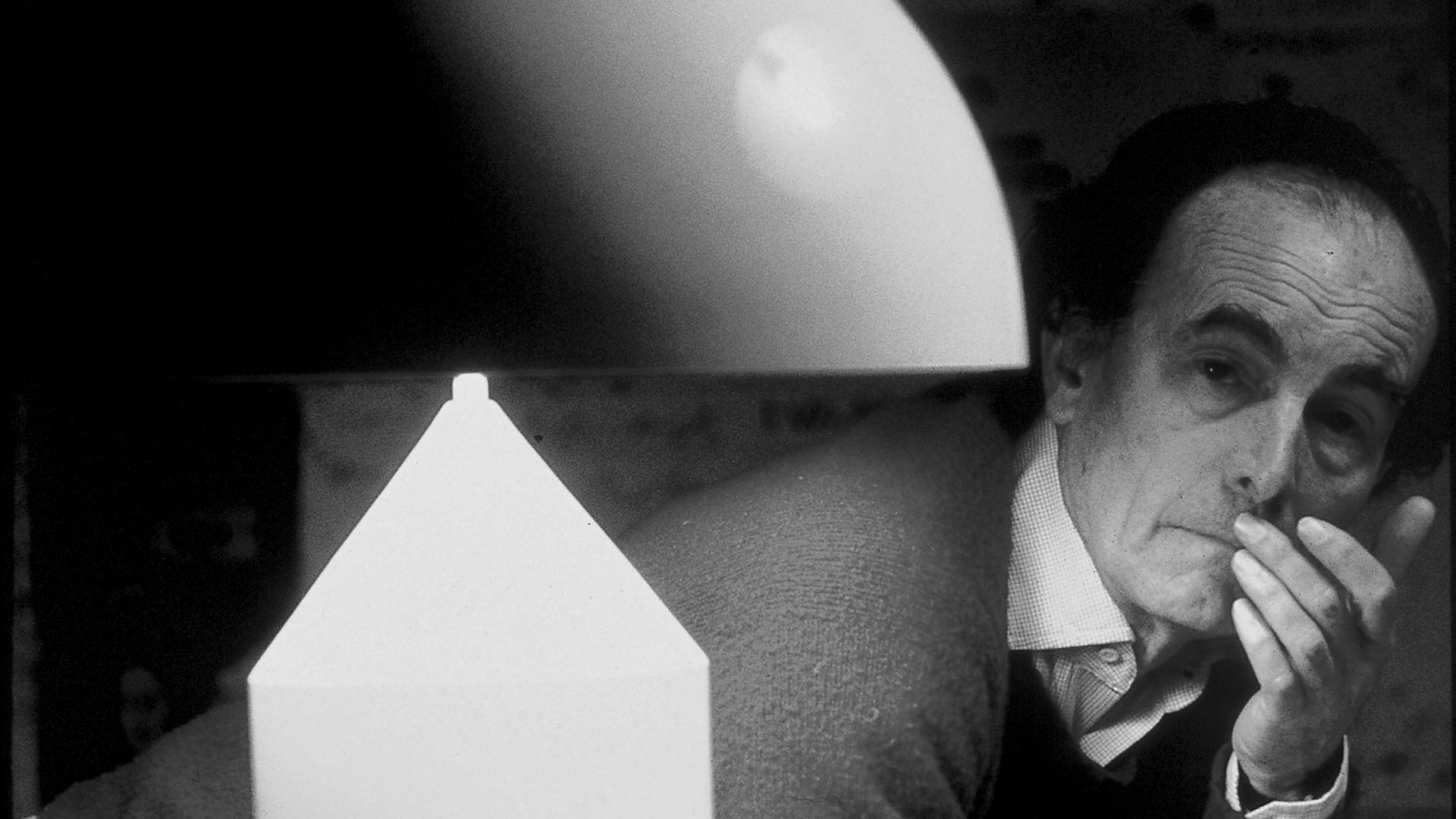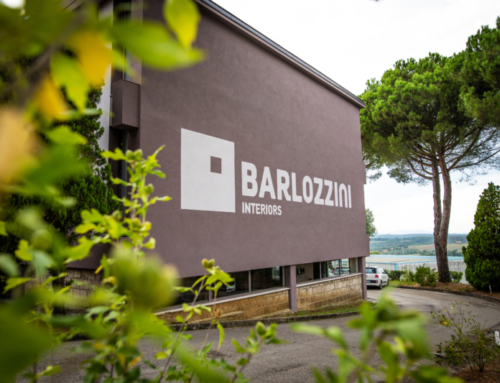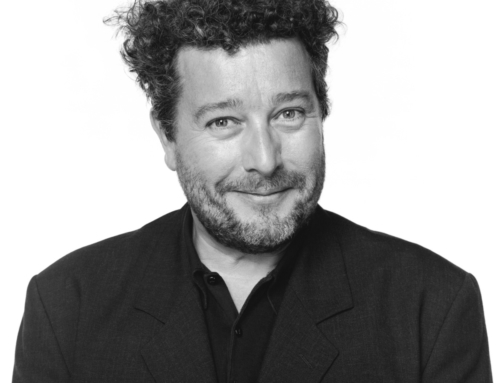Born into a middle-class Milanese family on October 6, 1920, Vico Magistretti
attended the Parini classical high school, before enrolling, in the autumn of 1939, in to the Faculty of Architecture of the Royal Polytechnic of Milan, where leading figures in the architectural landscape of the time such as Gio Ponti and Piero Portaluppi were taught. Between 1943 and 1944 he decided, like many intellectuals of the time, to leave his country, and moved to Switzerland where, at the Champ Universitarie Italien in Lausanne, he had the opportunity to take some academic courses. At that time, he frequented Ernesto Nathan Rogers, who would remain in the architect’s memory as a key figure in his intellectual training.
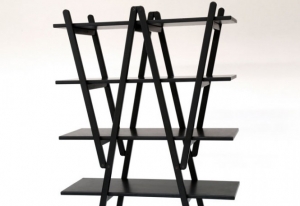 In 1945 he returned to Milan, where on the 2nd of August of the same year, he graduated in Architecture at the Politecnico. He immediately began his professional career in his father’s studio, architect Piergiulio Magistretti (who participated in the Arengario in Piazza Duomo, in collaboration with Giovanni Muzio, Piero Portaluppi, Enrico Agostino Griffini, in the construction of some of the most significant buildings in Milan in the 1920s and 1930s), in Via Conservatorio. These were the years of reconstruction, when he was involved in both cultural associations (in 1946 he was one of the promoters of the MSA) and professional activities, initially carried out mainly in the field of subsidized building.
In 1945 he returned to Milan, where on the 2nd of August of the same year, he graduated in Architecture at the Politecnico. He immediately began his professional career in his father’s studio, architect Piergiulio Magistretti (who participated in the Arengario in Piazza Duomo, in collaboration with Giovanni Muzio, Piero Portaluppi, Enrico Agostino Griffini, in the construction of some of the most significant buildings in Milan in the 1920s and 1930s), in Via Conservatorio. These were the years of reconstruction, when he was involved in both cultural associations (in 1946 he was one of the promoters of the MSA) and professional activities, initially carried out mainly in the field of subsidized building.
From 1949 to 1959 he designed and carried out about 14 projects for the INA-Casa, and with Mario Tedeschi, he also participated in the collective enterprise of QT8 with the former African quarter and later with the church of Santa Maria Nascente. In Milan’s Triennial and nascent design industry, his participation in the editions of the VIII, IX (gold medal), X (grand-award) was particularly important, and he also curated some exhibitions for the Milanese institution as part of the most recent exhibitions (in particular the XII Triennale of 1960 together with Ignazio Gardella). The ’50s were marked by initiatives and innovative proposals from the young architect, who in a short time proved to be one of the most brilliant among the members of the “third generation”. This period saw the construction of two of the most important buildings of Vico Magistretti’s professional career in Milan: the park tower in Via Revere (1953-56, with Franco Longoni) and the office building in Corso Europa (1955-57); in the following years, several other particularly important works were added, including the towers in Piazzale Aquileia from 1962-64.
He was one of the founding members of ADI, the Association for Industrial Design, in 1956. In 1959 he was part of the jury of the Compasso d’Oro Prize, together with Bruno Alfieri, Giulio Minoletti, Augusto Morello and Giovanni Romano. In 1960, he was again among the jurors of the ADI prize, together with Lodovico Belgiojoso, Augusto Magnaghi, Augusto Morello and Marco Zanuso.
 The particular attention he devoted to the theme of home and habitation, ended up monopolizing his career as an architect in the 1960s, causing him to develop an extremely expressive language that, although sometimes polemically criticized, had a great deal of influence on the Lombard architectural culture of the period, allowing him to become one of its undisputed protagonists. In this regard, his participation in 1959 at the CIAM Congress (Congrès Internationaux d’Architecture Moderne) in Otterlo (Holland) is memorable, where the Italians presented the Velasca tower by BBPR, the Olivetti canteen by Ignazio Gardella, the houses in Matera by Giancarlo De Carlo, and in fact, the Arosio house in Arenzano by Vico Magistretti (built the year before). These works created a great scandal, and were in a certain sense the emblem of the profound crisis that in those years struck the well-known institution, which until then had been the undisputed protagonist of the debate around architecture. The Arosio house seems to mark the beginning of a very personal exploration of a language that is also clearly expressed in other contemporary detached houses such as the Schubert villa in Ello (1960), the Gardella house in Arenzano (1963-64) and the Bassetti villa in Azzate (1960-62).
The particular attention he devoted to the theme of home and habitation, ended up monopolizing his career as an architect in the 1960s, causing him to develop an extremely expressive language that, although sometimes polemically criticized, had a great deal of influence on the Lombard architectural culture of the period, allowing him to become one of its undisputed protagonists. In this regard, his participation in 1959 at the CIAM Congress (Congrès Internationaux d’Architecture Moderne) in Otterlo (Holland) is memorable, where the Italians presented the Velasca tower by BBPR, the Olivetti canteen by Ignazio Gardella, the houses in Matera by Giancarlo De Carlo, and in fact, the Arosio house in Arenzano by Vico Magistretti (built the year before). These works created a great scandal, and were in a certain sense the emblem of the profound crisis that in those years struck the well-known institution, which until then had been the undisputed protagonist of the debate around architecture. The Arosio house seems to mark the beginning of a very personal exploration of a language that is also clearly expressed in other contemporary detached houses such as the Schubert villa in Ello (1960), the Gardella house in Arenzano (1963-64) and the Bassetti villa in Azzate (1960-62).
In the years that followed, his work as an architect was increasingly flanked by that of a designer with the creation of furnishings and objects that would remain the ” classics ” of contemporary production. It was the time of the Municipality of Cusano Milanino (1966-69), of the Milano-San Felice district (1966-69, with Luigi Caccia Dominioni), of the house in Piazza San Marco (1969-71) but also of the Compasso d’Oro prize for the “Eclisse” lamp (1967), for the “Atollo” lamp (1977) and for the “Maralunga” armchair (1973, prize in 1979).
His design awards are still numerous and of great prestige; he was appointed as a member of the Accademia di San Luca in 1967 and was appointed as an honorary member of the Royal College of Art in London, where he is also a “visiting professor”. He has also taught at the Domus Academy in Milan and held conferences and lectures in Europe, Japan and the USA. In 1986 he was awarded a gold medal by the SIAD (Society of Industrial Artists and Designers).
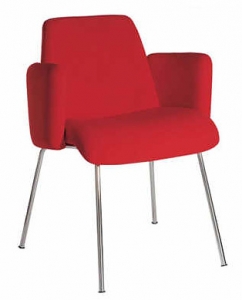 Among his most recent works are the headquarters of the Faculty of Biology in Milan (1978-81, with Francesco Soro), the housing project in Piazzale Dateo (1984 with Francesco Soro), the Tanimoto house in Tokyo (1985-86), and the Cavagnari Center of the Cassa di Risparmio in Parma (1983-85), the technocenter of the Cassa di Risparmio of Bologna (1986-88), and for the ATM in Milan, the Famagosta depot (1989-2002), the Esselunga supermarket in Pantigliate (1997-2001), the villa in Saint Barth in the French Antilles (2002), the offices of the former Cerruti wool mill in Biella (2005), and one of his latest projects, the villa in Epalinges, near Lausanne (2005).
Among his most recent works are the headquarters of the Faculty of Biology in Milan (1978-81, with Francesco Soro), the housing project in Piazzale Dateo (1984 with Francesco Soro), the Tanimoto house in Tokyo (1985-86), and the Cavagnari Center of the Cassa di Risparmio in Parma (1983-85), the technocenter of the Cassa di Risparmio of Bologna (1986-88), and for the ATM in Milan, the Famagosta depot (1989-2002), the Esselunga supermarket in Pantigliate (1997-2001), the villa in Saint Barth in the French Antilles (2002), the offices of the former Cerruti wool mill in Biella (2005), and one of his latest projects, the villa in Epalinges, near Lausanne (2005).
Since the ’60s, the career of designer has been marked annually by the creation of new “pieces”, events are also expected at the Salone del Mobile in Milan. In 1997, Salone dedicated a monographic exhibition to Vico Magistretti, next to that of his “teacher” Gio Ponti. The “Vico Magistretti” exhibition was held at the Palazzo Ducale in Genoa in 2003. The designs from the Fifties to present were entirely centered on his work as a designer. In the same year, he was appointed member of the Scientific Committee of the Fondazione Politecnico di Milano, and in 2005, received the special prize “Abitare il tempo”. His latest design projects were presented at the 2008 Salone del Mobile. His design works are exhibited at the permanent collection of MOMA in New York and at other museums in America and Europe.



